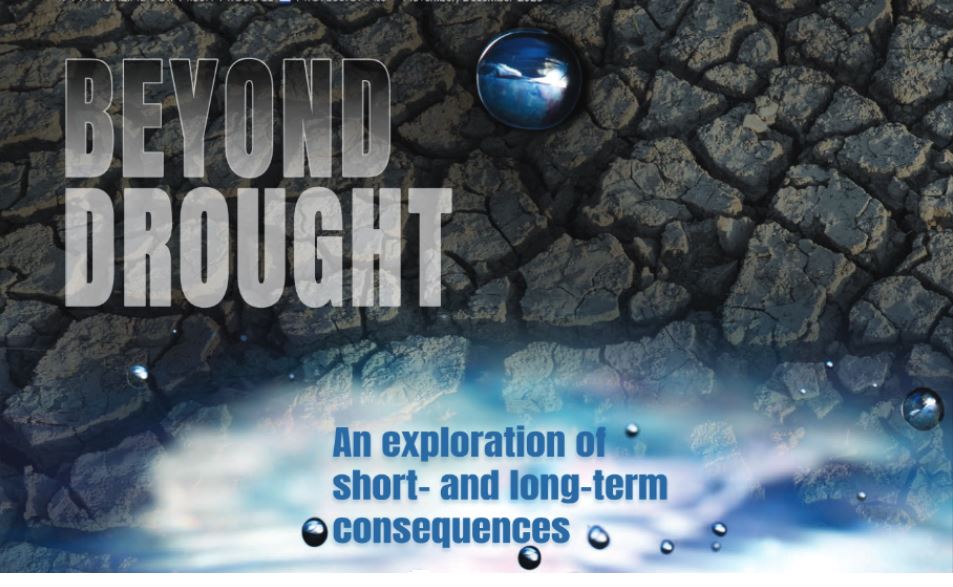After the water projects that divert rainfall and snowpack, the second major source of agricultural water in the West comes from underground.
“In recent decades, reductions in surface water—a result of drier conditions and changes in environmental regulations—have prompted more groundwater use,” notes the Public Policy Institute of California Water Policy Center website—along with groundwater depletion.
Growers have not been blind to water limits. Caitlin Peterson, associate director and research fellow for thePPIC stresses that growers are motivated to use it efficiently. “There is no profligate use of water in any well-run operation.”
One of the most prevalent forms of water conservation has been a large-scale transition away from surface irrigation since the late 1970s.
“In total, 48 percent of California’s 8.4 million acres of irrigated farmland are irrigated with drip, micro, or subsurface irrigation. This is up from only 15.8 percent in 1991,” according to the website of Cultivate California, a coalition of agricultural and related interests.
These more sophisticated methods can generate considerable savings.
John Pandol, director of special projects for Pandol Bros., Inc., BB #:111977 Delano, CA, notes that table grapes require 3.5 to 4 acre-feet per acre per season with these methods, whereas trees require 4.5 to 5 acre-feet. He compares these figures to cotton (an important but now dwindling crop in the San Joaquin Valley), which requires 7 acre-feet per acre using traditional surface methods of irrigation.
This transition, although enabling a great deal of water conservation, has its drawbacks. One is ground subsidence, another major problem in the Central Valley. The less water applied, the less percolates underground.
Pandol says much more “loose water used to go down; maybe 20 percent of it got into the water table.”
Management and solutions
Groundwater depletion has become so acute that California passed the Sustainable Groundwater Management Act (SGMA, pronounced sigma) in 2014. Areas presenting particular problems were ordered to form groundwater sustainability agencies (GSAs) to implement groundwater sustainability plans (GSPs).
In signing the legislation, then-Governor Jerry Brown stressed that “groundwater management in California is best accomplished locally.”
In many cases, the locals haven’t done too well. Many GSPs were deemed “incomplete or inadequate,” Peterson notes, requiring the State Water Board to come in and implement them, which “was intended to be a last resort.”
Admittedly, the task of measuring a resource that’s underground is a difficult one. Furthermore, as Peterson says, “Every GSA had to come up with its own method of determining sustainable yield,” which, she adds, “is notoriously difficult to quantify.”
“Sustainable yield” here refers to the amount of water that can be removed each year without long-term depletion.
It’s almost universally agreed that SGMA has led to reductions in farmed acreage and will lead to more by the time the program is fully implemented in 2040. Estimated figures vary, although most fall within the range mentioned by Peterson: 400,000 to 1 million acres.
Reductions have already hit rice country in the Sacramento Valley; another frequently mentioned potential victim is almonds.
“It’s not clear what the breakdown will be by crop type, but much of the impact is expected to be on almond growers,” says Walt Duflock, vice president of innovation for Western Growers Association, in an article posted on Medium.com.
The solution? California agriculture tends to give one answer: infrastructure.
Infrastructure projects
“As a state, we’ve failed to increase our water capacity,” points out Pandol. “They started building projects in the 1930s; then they got to a certain point and stopped.”
The history of water infrastructure in the western United States is almost as complicated as the story of water itself. But it’s safe to say that the great government projects launched in the mid-twentieth century focused on human use, agriculture, and industry. Only later were environmental considerations added.
Pandol cites the Wild and Scenic Rivers Act of 2011, which protects more than 13,400 miles of rivers and streams in the United States and, he contends, gives first priority to directing water into rivers and ultimately into the ocean: “They’re essentially trying to recreate rivers that never were.”
Whether this “is taking water out of ag’s piece of the pie is more of a grey area to me,” says Peterson, adding that the state has “already built dams in every location where it’s geologically and environmentally possible.”
Peterson’s answer leads us back to groundwater. It’s hardly feasible, she says, to build more reservoirs for storage “without going to more trouble than makes sense.”
As a result, underground storage is likely to be much more effective. “There’s a lot of room in our aquifers, which are overpumped. The infrastructure challenge is to get water from where it is to where it needs to be,” she says.
Another option is water trading: “Paying water users to make water available can enhance the environment while reducing conflict over the allocation of scarce supplies,” says a PPIC paper.
This is an excerpt from the cover story in the November/December 2023 issue of Produce Blueprints Magazine. Click here to read the whole issue.



